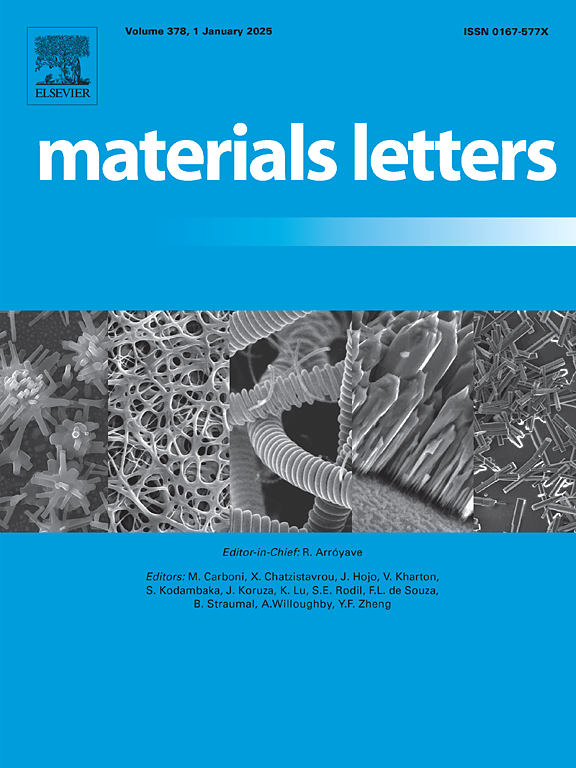A dopant-free polymeric hole transport material for 8.66%-efficient CuInS2 solar cells
IF 2.7
4区 材料科学
Q3 MATERIALS SCIENCE, MULTIDISCIPLINARY
引用次数: 0
Abstract
CuInS2-based bulk heterojunction (BHJ) film is a promising photoelectric conversion material system for photovoltaics. Here, a dopant-free polymer PTB7-Th is used as a hole transport material (HTM) in CuInS2-BHJ solar cells for the first time. The morphology, optical property and electrical property of the PTB7-Th film are investigated. The CuInS2-BHJ solar cell using PTB7-Th as a HTM achieves a considerable power conversion efficiency of 8.66% and exhibits a good stability in ambient condition.
用于8.66%效率的CuInS2太阳能电池的无掺杂聚合物空穴传输材料
基于cuins2的体异质结(BHJ)薄膜是一种很有前途的光电转换材料体系。本文首次在CuInS2-BHJ太阳能电池中使用无掺杂聚合物PTB7-Th作为空穴传输材料(HTM)。研究了PTB7-Th薄膜的形貌、光学性能和电学性能。以PTB7-Th为热媒材料的CuInS2-BHJ太阳能电池的功率转换效率高达8.66%,在环境条件下具有良好的稳定性。
本文章由计算机程序翻译,如有差异,请以英文原文为准。
求助全文
约1分钟内获得全文
求助全文
来源期刊

Materials Letters
工程技术-材料科学:综合
CiteScore
5.60
自引率
3.30%
发文量
1948
审稿时长
50 days
期刊介绍:
Materials Letters has an open access mirror journal Materials Letters: X, sharing the same aims and scope, editorial team, submission system and rigorous peer review.
Materials Letters is dedicated to publishing novel, cutting edge reports of broad interest to the materials community. The journal provides a forum for materials scientists and engineers, physicists, and chemists to rapidly communicate on the most important topics in the field of materials.
Contributions include, but are not limited to, a variety of topics such as:
• Materials - Metals and alloys, amorphous solids, ceramics, composites, polymers, semiconductors
• Applications - Structural, opto-electronic, magnetic, medical, MEMS, sensors, smart
• Characterization - Analytical, microscopy, scanning probes, nanoscopic, optical, electrical, magnetic, acoustic, spectroscopic, diffraction
• Novel Materials - Micro and nanostructures (nanowires, nanotubes, nanoparticles), nanocomposites, thin films, superlattices, quantum dots.
• Processing - Crystal growth, thin film processing, sol-gel processing, mechanical processing, assembly, nanocrystalline processing.
• Properties - Mechanical, magnetic, optical, electrical, ferroelectric, thermal, interfacial, transport, thermodynamic
• Synthesis - Quenching, solid state, solidification, solution synthesis, vapor deposition, high pressure, explosive
 求助内容:
求助内容: 应助结果提醒方式:
应助结果提醒方式:


